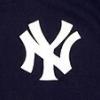-
Posts
21506 -
Joined
-
Days Won
82
Content Type
Profiles
Forums
Downloads
Everything posted by Yankee4Life
-

Random Thoughts On A Sunday Morning Updated To 11-23
Yankee4Life replied to Yankee4Life's topic in Left Field (Off-Topic)
Updated to 5-31 ...Twice a year we go to the Waterloo outlet Mall to do some shopping and yesterday morning was our first time this year. I should correct this. She does the shopping while I wait outside and sit and wish I was someplace else. ...Not that I was alone. There's benches all over that mall and every one of them were taken up by some guy who was doing the same thing I was, being bored and trying not to show it. ...Towards the end of it, I was so tired I couldn't even do the required girl watching. ...I tried the Pepsi Throwback drink the other day. It's not bad and you can tell that their is a difference. ...Next year Mindy McCready will be on a reality TV show called Celebrity rehab. No word as of yet if Roger Clemens will make a guest appearance. ...Gas prices once again are on the rise and just in time for summer too! Don't tell me that this isn't planned. ...Do those midges and mosquitoes only show up in Cleveland when the Yankees are there? ...If those midges need something to do, go and bother Jose Veras. ...It's just nice to see this ballclub playing as good as they should. They're not making excuses, they are just going out and playing the game right. ...Yeah, Zach Grienke had a great month of May (and it still isn't over because he's pitching today) but let's see how he does in June. There's no way he's this good. ...Highly touted catching prospect Matt Wieters is up with the Orioles now. It's unclear as of now if he's had any time to perform miracles yet. -
Your best bet is to send OTB Joel a PM and let him know this.
-
The Japanese are funny http://www.youtube.com/watch?v=hVO_WSNEtTY http://www.youtube.com/watch?v=dCConZqZv3g...feature=related http://www.youtube.com/watch?v=kUwlwnX45Dg...feature=related Don't laugh or you'll get spanked http://www.youtube.com/watch?v=Z_nIuyei9Kw...feature=related http://www.youtube.com/watch?v=reGBb4tiGGc...feature=related ( I originally saw this on HBO and never forgot it)
-
A novel approach on how to deal with a pain in the neck roommate http://www.youtube.com/watch?v=Z17-JYf3N08 Female spectator hit by a soccer ball http://www.youtube.com/watch?v=xPdhoPCzXPk...feature=related Amazing, just amazing http://www.youtube.com/watch?v=Wso13n4kHZ4
-
Wrong place, wrong time. http://www.youtube.com/watch?v=y978HjnNwOQ&NR=1 Not now honey, ok? I'm busy. http://www.youtube.com/watch?v=lvG6E2UOg0o...feature=related This is NOT a porn video. It's an Australian commercial. Don't know why those words were associated with this clip because it is not a porn video. http://www.youtube.com/watch?v=4g5NR5wj97U...feature=related
-
This is a funny kid http://www.youtube.com/watch?v=4A5DjiFL704&feature=dir Mvp 05 video Yankees at Boston posted by ixcuincle, a member of this website (8:05 min) The original music was taken out of this video by youtube. http://www.youtube.com/watch?v=Lm8jc7nXKqw...ec-HM-fresh+div
-

Random Thoughts On A Sunday Morning Updated To 11-23
Yankee4Life replied to Yankee4Life's topic in Left Field (Off-Topic)
Updated to 5-24 ...A very early morning update to this thread this time. I was watching a movie on the Sci-Fi channel last night called Lake Placid 2 and before I go on I have to admit that these are not the kind of movies I watch at all. In fact I can't stand scary movies. They have a habit of giving me nightmares about the movie. Which is why I am up right now. ....On Friday night I went to see Night at the Museum 2: Battle of the Smithsonian. I was waiting for this one to come out for quite some time after I originally saw the previews months ago and I wasn't disappointed. I'd see it again and I think if you liked the first one, you will like this one. Also, after watching this movie it did not affect my sleep one bit. ...The girl that played Amelia Earhart in the movie, Amy Adams, has a very nice..um, smile. ...Notice to all Will Farrell haters: The guy who thinks of himself as an actor and a comedian is coming out with yet another movie. This one's called The Land of the Lost. The thing about this guy is that he can't act and he isn't funny at all, but yet he keeps making movies. ...Nice to see the chat function get re-introduced on the website. To access it, just check out the top of the home page of the site and click on "chat." See you in there sometime. ...The wonderful thing about this website is that we keep getting new people that join up that quickly become important members of the site just by their presence here daily. Guys like rroy and Wicked come to mind right away. Of course right now I'm forgetting others and forgive me for that. It's 4:30 am and did not expect to be up at this time. ...Well, at least we got the team right Dept: Yesterday during the Phillie-Yankee game on SUX, I mean FOX, John Mayberry Jr of the Phillies hit his first home run of his major league career. FOX immediately zoomed in on what they thought was his father, former player John Mayberry, in the stands as he was wearing a Phillie hat and was clapping and cheering. The problem was, this wasn't John Mayberry. It was just a fan who just happened to be cheering on his Phillies. At least FOX admitted their mistake but not before Tim McCarver gave a detailed explanation as to why it could have been John Mayberry. ...What I like most about this current streak the Yankees are on is that everyone is helping. They're pitching well, fielding well and getting timely hitting. And it isn't just one guy who is relied on. That's what is most important. This is also something that I did not see at all in 2008. ...Because you know when Jose Veras gets credit for a win, things are going your way. ...Everyone enjoy your Memorial Day weekend. And remember when you are enjoying your hot dog today and watching a game, reflect on what this day actually stands for. -
I can not believe after all this time this topic has not been stickied. I apologize and it has been corrected.
-

Random Thoughts On A Sunday Morning Updated To 11-23
Yankee4Life replied to Yankee4Life's topic in Left Field (Off-Topic)
1978, but I do see your point here. Thank you. -

Random Thoughts On A Sunday Morning Updated To 11-23
Yankee4Life replied to Yankee4Life's topic in Left Field (Off-Topic)
Yeah, well ok. :lol: -

Random Thoughts On A Sunday Morning Updated To 11-23
Yankee4Life replied to Yankee4Life's topic in Left Field (Off-Topic)
Updated to 5-17 ...It's now official after all this time. Beginning June 1st we all will need passports to go to Canada or Mexico because of course none of us can be trusted. Traveling will be down. One passport costs over 100 dollars and it takes four to six weeks to process. There goes any plans of seeing the Yankees at the Skydome. Thanks a lot you *&*&*(#$ Arabs. ...It is a guarantee in life that the first day you go out with a new pair of shoes on that it is going to rain. ...What the heck is Twitter? Whatever it is, they couldn't have thought of a better name? ...One day last week I was watching some Yankee World Series highlights on the MLB Network (yes, sometimes they actually show stuff that is not Red Sox related) and it was nice reliving all those wonderful moments from the Championship years again. But after it was done it really made me kind of depressed because I realized those days were done and that we were now stuck with this current team. ...Grateful for people like Nick Swisher in the world. At least he shows he cares. ...Kim Jones of all people has a great blog on the YES Network homepage. And speaking of that website, the post game plus feature they have on there is everything a Yankee fan needs. ...Edwar Ramirez needs to be given a sandwich and then right after that, his outright release. ...What's the over and under that Brett Favre comes back again and does anyone care except for Brett Favre? ...What is it with pitchers throwing at Ian Kinsler of the Rangers? ...Let's go Orlando Magic. Those people in that city have had it their way much too long now. Beat the snot out of them. -

Random Thoughts On A Sunday Morning Updated To 11-23
Yankee4Life replied to Yankee4Life's topic in Left Field (Off-Topic)
Updated to 5-10 ...Happy Mother's Day to all the mothers out there. I hope you all have a nice and relaxing day like you all deserve. and thank you for everything. ...I am not a fan of his and never will be, but I was not happy to learn of Manny Ramirez' fifty game suspension for use of performance enhancing drugs. ...Although if someone like Albert Pujols gets caught next, that would be hilarious. Only because he's been denying it all this time and that I don't give a damn about him. ...Nice to see Alex Rodriguez come back. If the Yankees do anything this year they obviously will need him. And by the way, nice move by the Orioles to sell those foam syringe needles with "A-Roid" written on them. It's just another reason of many for me not to care about or compliment any other team in baseball besides my own. Just makes me wonder what the uneducated rabble in one certain city that ends with OSTON is going to do next month when the Yankees have to play there. ...Save your complaints about the previous two statements here. I don't care. ...I will continue to wear my Yankee hat with pride wherever I go around town even if it appears that they are looking like the worst team in baseball. ...I just want them to get back on top again, not for me or my own satisfaction, but for the pride that is associated with that team. ...Just watching them play over the past few years has taken away what little patience I have with them. ...We all know what the problem is but still nothing is done about it. They have pitchers who can not throw strikes, who are more comfortable pitching behind the count, are not aggressive enough, who do not protect their hitters and accept losing with an easy and carefree attitude. ...I wish I could not care what this team does, but I can't. But what I can do is not waste my evenings watching this dark comedy anymore. I got better things to do with my life. ...Good to see fruit basket Zach Grienke lose last night but he didn't get lit up in the process. This is a guy I'd even like to see the Red Sox light up. -

Random Thoughts On A Sunday Morning Updated To 11-23
Yankee4Life replied to Yankee4Life's topic in Left Field (Off-Topic)
Updated to 5-3 ...I think the idea by Hoop27 and the rest of those guys who want to make their own baseball game really is not a bad one. Sure, it might be tough but I don't bet against anyone here or root against them. If they think they can do this, so do I. ...I finished that Crazy 08 book that I got last week. What a book. I found out a lot of things that I never knew before about baseball. Here's just two. I learned that that Pirates had a very good shot of signing Walter Johnson before the Senators did and that if they would have increased the offer to purchase Napolean Lajoie, he would have been a Pirate also. The thought of a Honus Wagner and Napolean Lajoie infield would have been something. ...These are the kind of sports books I love. Baseball ones and at the same time you learn something about the game. I don't like the kind of books like that new Alex Rodriguez one that's on it's way. It's not baseball, it's more like a National Enquirer type of book filled with allegations and he said-she said material. ...Friday night I had to go to the movies. It was her choice. I got roped into seeing Ghosts of Girlfriends Past. It was ok, and by that I mean I've seen worse, but the one I'm really waiting for is the sequel to Night of the Museum. ...One thing I noticed after that movie was done that Jennifer Garner has a face like a collie. ...One other one that I've got to see is Angels and Demons and that's going to be released on May 15. You can check out trailers for it on this website here. ...Did the Yankees beat the Angels two in a row or did I read that wrong? I know they blew it last night. That was more like it. ...And it sure would be a good idea if Sabathia and Teixeira would start to show up. Like right around now. ...One question. If Wang was hurt like this with his hip for quite some time now like I read, why couldn't they tell during spring training? ...For those of you who are still on the fence about getting 2K9 for the PC all I can tell you is to go to youtube and type in MLB 2K9 and just look at the videos that have been posted. ...Glad to see In Plain Sight come back for a second season. That's quickly become one of my favorites. -
Because they asked once. You've asked too many times.
-
Ok look. It's obvious to me you know your way around virtual drives. You are able to mount and unmount your images that you have. You can at least agree with me on this. If you know how to use the images for this game you should also know how to make these images. And that means you could have made images from your original disks and that would not have caused you the problems you are now having. The original poster of this thread said he used images for this game. That's not the issue here. Using images are not the problem here. You can make images of your original disks. But you clearly stated that you downloaded these images and that's something I don't understand if you in fact do own the original two disks. You're having problems installing things and it is because you have made images from a downloaded version of this game. Because all you got to do to fix these problems is to use your original disks because those disks will not give you the problems you are experiencing right now. But you can't because it's obvious you do not own the game. You are not the only person who has had problems with this downloaded version of Mvp baseball. It is clear to me that the copy of this downloaded game is not 100% perfect and that's why problems have arisen with it. Oh well. That's the chance you take when you download a game. Which brings us back to my original point. Since you downloaded this game, you will not get any support for the problems you are having. Because if you do actually own this game, you can fix these problems you are having just by using the proper disks. And that's as far as I am going to go with this.
-
What the hell is a falled.big? Or do you mean failed?
-
I am sure that this will end up being a great mod to use. What I would do if I were you is pick the brains of the people who have already made season mods for advice and tips in case you run into any questions along the way. Above all, good luck to you.
-
NO. You have a pirated game. You get no support here because of that. Don't take it personal.
-
How quickly you now understand me. Why would you download the images if you already own the game? I may be a lot of things but stupid I am not.
-
What stir? You did nothing wrong. This is your mod. You make it as you see fit. I don't see this as an issue at all. If you are making a season mod then it should be understood that the player's stats are going to be based on what he did in that particular year, not for his entire career. I think my Dimaggio example from a few posts back explains it well enough. If some guy hit .340 for example in 1998 but in every other year he played he never hit above .280, you can't apply the stats from the other years into that one season mod. It's what the player did in the particular season that is important. That's why you are making a season mod and not a total career mod. That's a huge difference if you think about it.
-
I kind of figured that based on the answers you were giving. It isn't my business what you download or what you do while you are on the internet but on this site it is. You can not get technical support here because you downloaded this game which is copyrighted material by EA Sports. If we help you out it can be interpreted by the EA company that we are looking the other way when this is done and that we don't care. EA then could make things very hard for us. Now that you've downloaded this game you have to figure everything out for yourself. And please, don't come back here in 48 hours and say you just bought the game because it isn't being sold in stores anymore and where this is being sold (ebay, Amazon) people are paying over fifty dollars for it. That is way over the original price that this game was sold for by EA in 2005. Here is the rule on the site for this: No warez or cracks or links to such content. Help, requests or posts that discuss circumvention of copyright measures are forbidden. This includes linking to illegally obtained software, movies & music files - posting about it, and suggesting obtaining it.
-
That's odd. Do you have the disks or did you download the game? That might have something to do with it.
-
Well, it's not for me to contact you about this since I'm not working on the 1998 mod but if you really believe that you have something to offer then that's fine. It is too bad though that you can't show anyone what you mean. Just reading your explanation of what you were trying to convey, I don't believe you are one of those people who come in here and just want, want, want. Just check this thread a few pages back and you'll see a perfect example of what I mean. I don't think you are that kind at all after listening to you. Even though your reasoning is sound, I don't think this is what they are after when a season mod is created. We have a lot of season mods out there as you can tell. Let me use the 1951 mod for an example. That mod is the only season mod that has Joe Dimaggio in it. Dimaggio for his career was a .325 hitter but in 1951, his last year in the majors, he hit .263 with 12 home runs and 71 RBI. Hardly a year you would be proud of if you were a Hall of Fame type player. Even though we all know that Dimaggio was so much more a better player than this, this is exactly what he did in 1951 and to have a season mod be accurate, those are the stats that Dimaggio has when you play that mod. And this is for this reason alone that when Shane Spencer is in the '98 mod, his stats will be better because his overall offensive stats in 1998 were better as compared to any other year he played.
-
That's been happening a lot lately.
-
Andy82, here is the link for loclook.


